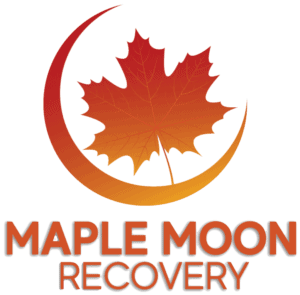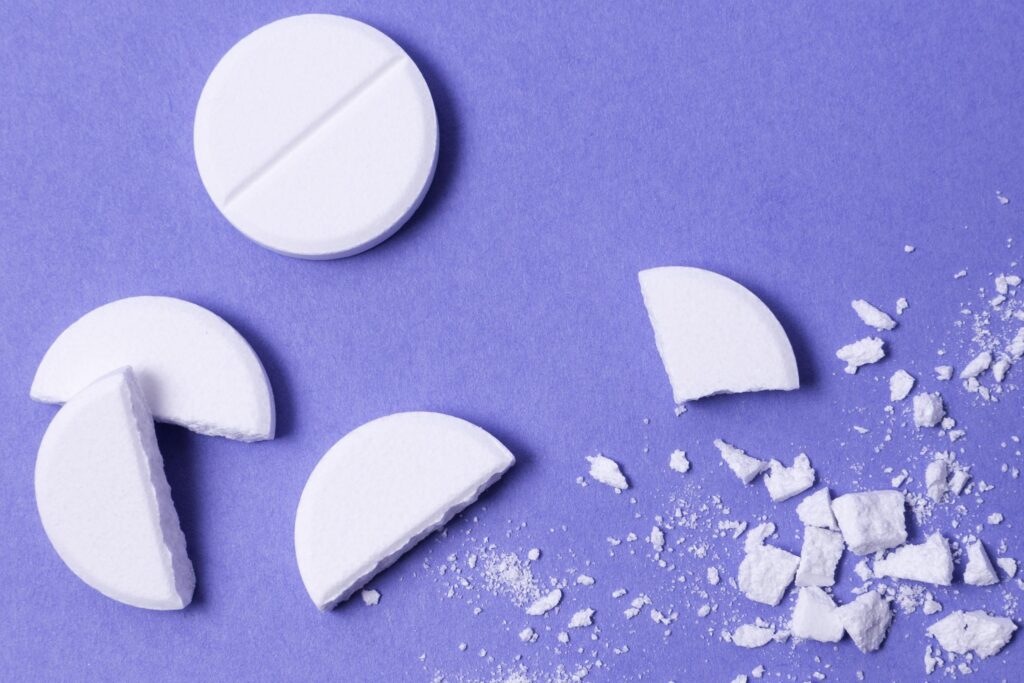How Long Does Oxycodone Stay in Your System? Discover The Truth

Key Points
- Oxycodone Basics: Oxycodone is a powerful opioid medication used primarily to treat moderate to severe pain.
- Detection Periods: Traces of oxycodone can remain in your blood, urine, saliva, and hair for varying lengths of time, often dependent on metabolism, dosage, and overall health.
- Signs of Oxycodone Abuse: Physical and behavioral indicators can signal when someone is misusing oxycodone, including changes in mood, social withdrawal, and doctor shopping.
- Can You Smoke Oxycodone?: This practice is dangerous, escalating the risk of addiction and complications.
- Risk of Dependence: Oxycodone carries a high potential for dependence and addiction; individuals struggling with misuse benefit from professional support.
- Inpatient Medically Assisted Rehab: The gold standard for managing opioid addiction, offering a safe and controlled environment for detox and recovery.
- Maple Moon Recovery: A dedicated center supporting individuals through medically assisted rehab, counseling, and long-term recovery strategies.
Introduction
If you or someone you love is taking oxycodone, one of the most pressing concerns is understanding how long this powerful opioid remains in the system. Oxycodone, a potent prescription painkiller, is known for its effectiveness in treating moderate to severe pain. However, it also has a high potential for misuse and addiction, which underscores the importance of having accurate information about its effects, detection windows, and potential health risks [1].
This article will provide a thorough look into the science behind oxycodone’s presence in the body, factors that affect its duration, and the dangers of abuse. Additionally, we will spotlight crucial strategies for seeking help, including why inpatient medically assisted rehab remains the best solution for many individuals struggling with addiction. We’ll also discuss how Maple Moon Recovery can support anyone seeking to break the cycle of opioid dependence. Read on to discover the shocking facts you need to know for a healthier tomorrow.
Understanding Oxycodone
What is Oxycodone?
Oxycodone is a semisynthetic opioid derived from thebaine, a component of the poppy plant [1]. It is commonly prescribed for pain relief under brand names such as OxyContin, Percocet (oxycodone combined with acetaminophen), and Roxicodone. Due to its potency, it’s often reserved for pain that cannot be managed by less potent medications.
Opioids like oxycodone work by binding to opioid receptors in the brain and spinal cord. This helps reduce the perception of pain while creating feelings of euphoria and relaxation. While effective in treating debilitating pain, these same euphoric properties can make it highly addictive.
How Long Does Oxycodone Stay in Your System?
The length of time oxycodone remains in your system can depend on numerous factors, including metabolism, overall health, dosage, and method of intake. Some testing methods will detect oxycodone for a more extended period than others. Here is a general guideline, though actual times may vary person to person:
- Blood Tests
Oxycodone can typically be detected in the bloodstream for up to 24 hours after the last dose [2]. Blood tests are effective for short detection windows, making them useful if there’s suspicion of recent use. - Urine Tests
The most common type of drug screening, urine tests can detect oxycodone for 3 to 4 days after the last use [2]. However, in chronic or heavy use scenarios, oxycodone may be present for even longer. - Saliva Tests
Saliva tests can usually detect oxycodone within 1 hour after ingestion and up to 48 hours post-use [3]. These tests are less invasive but have a shorter detection period compared to urine tests. - Hair Tests
Hair follicles can trap oxycodone metabolites for up to 90 days, making hair analysis particularly useful in understanding long-term patterns of use [3]. Hair testing is more expensive and is often utilized for forensic or extended historical drug use screenings.
Factors Affecting Detection Times
- Metabolism: Individuals with faster metabolic rates may eliminate the drug more quickly, whereas those with slower metabolisms could retain oxycodone longer.
- Age: Older adults often have reduced liver and kidney function, which can prolong how long the substance stays in their system.
- Dosage and Frequency: Higher doses and frequent usage extend detection windows significantly.
- Body Mass: Those with higher amounts of body fat may retain traces of oxycodone metabolites for longer periods.
- Overall Health: Pre-existing liver or kidney conditions can delay the drug’s clearance from the body, extending detection times.
These variables underscore the importance of individualized medical evaluations and the need for professional monitoring, especially if misuse is suspected.
Signs of Oxycodone Abuse
It can be challenging to determine whether someone is misusing oxycodone until the problem has escalated. However, recognizing signs early can mean the difference between life and death in some cases. Some signs of oxycodone abuse include:
- Doctor Shopping: Visiting multiple healthcare providers in order to obtain more prescriptions.
- Frequent Requests for Refills: Running out of medication more quickly than expected.
- Behavioral Changes: Social withdrawal, mood swings, anxiety, or irritability.
- Physical Symptoms: Constricted pupils, constipation, nausea, drowsiness, and shallow breathing [1].
- Financial Problems: Money issues arise due to spending significant amounts on acquiring more oxycodone.
If any of these signs surface, seeking professional help immediately is essential. Maple Moon Recovery offers assessments, resources, and guidance for those who suspect that they or a loved one may be struggling.
Different Types of Opioids
Opioids come in a variety of forms, each differing in strength, duration, and medical use. They are classified into natural, semi-synthetic, and synthetic categories:
- Natural opioids (opiates): Derived directly from the opium poppy plant, examples include:
- Morphine
- Codeine
- Semi-synthetic opioids: Chemically modified from natural opiates. Common examples include:
- Synthetic opioids: Entirely man-made but act on the same brain receptors. Examples include:
- Fentanyl (extremely potent, used in medical and illicit settings)
- Methadone (used for pain and opioid use disorder treatment)
- Tramadol (considered less potent but still addictive)
Each of these substances has a high potential for dependence and overdose, particularly when used outside of prescribed guidance or mixed with other depressants like alcohol or benzodiazepines.
Can You Smoke Oxycodone?
While oxycodone typically comes in oral forms such as tablets and capsules, some individuals may experiment with different methods of administration in attempts to get a faster or more intense high. Smoking oxycodone is especially dangerous and is not an approved or medically advised route of administration [4]. When oxycodone is heated and inhaled:
- The substance bypasses certain natural filters, like the liver, resulting in a rapid and powerful onset of effects.
- The lungs absorb the drug quickly, increasing the risk of overdose, respiratory depression, and addiction.
- The process of heating pills can release harmful toxins.
Smoking any opioid is a sign that someone has likely crossed into severe misuse. It significantly elevates the risk of long-term health complications, and the addictive potential is magnified due to the quick onset of euphoria.
The Dangers of Oxycodone Abuse
Opioid medications like oxycodone interact with the brain’s reward center, creating intense cravings when the drug starts to wear off. Over time, dependence can develop, causing withdrawal symptoms such as body aches, nausea, diarrhea, anxiety, and tremors when reducing or stopping use [1][2]. Chronic abuse may lead to:
- Overdose and Respiratory Failure
Opioids suppress the respiratory system, and taking more than the body can handle can lead to fatal respiratory depression [3]. - Organ Damage
Long-term misuse strains the liver and kidneys, exacerbating or leading to chronic conditions. - Mental Health Issues
Anxiety, depression, and other co-occurring mental health disorders can intensify under ongoing opioid misuse. - Relationship and Social Problems
Addiction often fractures family ties and friendships, and may result in legal or occupational troubles.
Oxycodone abuse is a nationwide crisis, with thousands affected by opioid overdoses each year. According to the Centers for Disease Control and Prevention (CDC), opioids were involved in nearly 75% of all drug overdose deaths in 2020 [5]. Because of these alarming statistics, medical communities emphasize prompt intervention and professional treatment programs.
How Maple Moon Recovery Can Assist
At Maple Moon Recovery, our mission is to offer personalized, compassionate, and evidence-based treatment for those struggling with oxycodone abuse. We understand that each person’s journey is unique, and our comprehensive approach addresses both the physical and psychological aspects of addiction. Key components of our approach include:
- Medically Assisted Detox: A team of healthcare professionals monitors withdrawal symptoms, ensuring the process is as safe and comfortable as possible.
- Counseling and Therapy: Individual, group, and family therapy sessions target the root causes of substance use and help foster coping mechanisms.
- Aftercare Planning: Recovery doesn’t end after detox. We help plan next steps and supportive resources for sustained sobriety.
Why Inpatient Medically Assisted Rehab is the Best Solution
Comprehensive, Round-the-Clock Care
Inpatient medically assisted rehab provides a 24/7 supportive environment, free from external triggers and distractions. Medical professionals, therapists, and support staff are always on-hand to manage detox, monitor any medication for withdrawal or co-occurring mental health conditions, and provide rapid intervention if complications arise. This constant supervision can be life-saving, particularly for individuals at a high risk of relapse or severe withdrawal [2].
Structured Treatment Environment
Being immersed in a structured setting allows patients to focus solely on their recovery. Carefully curated daily schedules might include group therapy, educational workshops, and holistic activities such as meditation, physical exercise, or art therapy. These structured routines can instill healthy habits and a sense of accountability, establishing the foundation needed for a successful transition to a drug-free lifestyle.
Collaborative Medical Support
Inpatient settings also allow for multidisciplinary teamwork, which may include physicians, psychiatrists, therapists, social workers, and addiction specialists [3]. These professionals collaborate to create a tailored treatment plan that addresses each patient’s unique needs. Because opioid addiction often coexists with mental health concerns like depression or anxiety, receiving integrated care in an inpatient context can lead to more favorable outcomes.
Lower Risk of Relapse
Another key advantage of inpatient care is significantly reducing the odds of immediate relapse. People struggling with opioid addiction may find it nearly impossible to resist cravings without external support. With inpatient rehab, there is limited access to illicit substances and, generally, strict policies to ensure the treatment environment is substance-free. This gives recovering individuals the chance to build coping skills in a safe space, away from the usual triggers they might encounter in daily life.
Access to Medications for Withdrawal and Maintenance
Medically assisted rehab programs can provide FDA-approved medications such as buprenorphine, methadone, or naltrexone to manage withdrawal symptoms and curb cravings [4]. When used in conjunction with therapy and psychosocial support, these medications can dramatically improve retention rates and overall treatment success.
Long-Term Recovery Strategies
After completing inpatient care, a robust aftercare plan becomes essential. While we are not focusing on outpatient programs in this discussion, do note that continuing therapy, 12-step programs, and ongoing medical evaluations can support sustained recovery [1]. Additionally, cultivating new hobbies, social networks, and stress management techniques can help individuals maintain long-lasting sobriety.
Frequently Asked Questions (FAQs)
- Q: How long does oxycodone stay in your urine?
A: Urine tests typically detect oxycodone for 3 to 4 days after the last dose. This timeframe can be longer for individuals who are heavy users or have underlying health issues [2]. - Q: What happens if I smoke oxycodone?
A: Smoking oxycodone is highly dangerous. It rapidly delivers the drug to the lungs and bloodstream, dramatically increasing the risk of overdose, respiratory failure, and severe addiction [4]. - Q: What are some common signs of oxycodone abuse?
A: Warning signs include running out of prescriptions early, doctor shopping, mood swings, social withdrawal, and experiencing withdrawal symptoms if you miss doses [1]. - Q: How does inpatient rehab differ from other forms of treatment?
A: Inpatient rehab provides 24/7 care, on-site medical and therapeutic support, a structured environment, and minimal access to external triggers. It is considered the best solution for many people with severe opioid addictions [2][3]. - Q: Why might Maple Moon Recovery be a good choice for treatment?
A: Maple Moon Recovery focuses on comprehensive care that includes medically assisted detox, therapy, and aftercare. Their evidence-based approach and dedicated team can offer a supportive environment to help individuals overcome opioid addiction and maintain long-term sobriety.
Final Thoughts
Understanding how long oxycodone stays in your system is critical not only for safe medical use but also for recognizing the risks associated with misuse. Detection windows can range from hours in blood tests to months in hair samples, emphasizing that oxycodone’s impact on the body can linger long after the last dose. Whether it’s the direct threat of overdose or the destructive cycle of addiction, the potential dangers of this opioid should not be understated.
If you or a loved one shows signs of oxycodone abuse, taking prompt action can make all the difference. Inpatient medically assisted rehab remains the gold standard for tackling opioid addiction, offering comprehensive medical care, structure, and the emotional support necessary for sustainable recovery. Organizations like Maple Moon Recovery are here to guide you through every step of the journey, from detox and therapy to aftercare planning.
Remember, with the right help, freedom from oxycodone addiction is possible. Don’t wait—take the first step toward a healthier tomorrow today.
References
[1] National Institute on Drug Abuse (NIDA). https://nida.nih.gov
[2] National Institutes of Health (NIH). https://www.nih.gov
[3] Substance Abuse and Mental Health Services Administration (SAMHSA). https://www.samhsa.gov
[4] U.S. Food and Drug Administration (FDA). https://www.fda.gov
[5] Centers for Disease Control and Prevention (CDC). https://www.cdc.gov
[6] Mayo Clinic. https://www.mayoclinic.org
🩺 Professionally Reviewed by:

Share This Post



